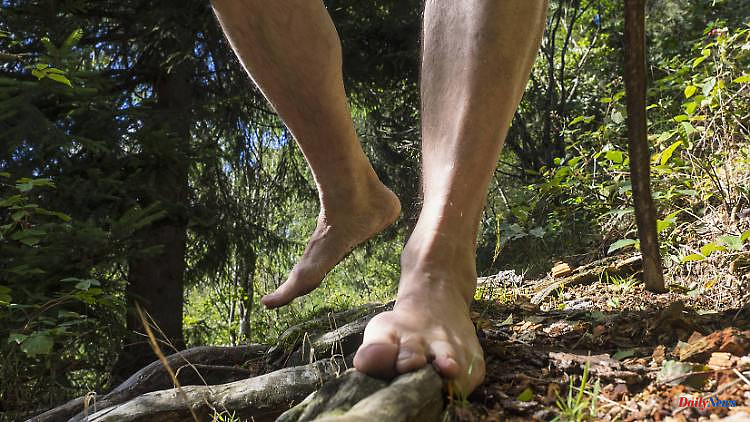As modern people, we are hardly used to walking without shoes. In fact, we were made to go barefoot. Especially when hiking you can get very close to nature without shoes. And that's good for muscles and blood circulation.
Hardly anything brings you closer to nature than hiking without shoes. What initially sounds a bit strange to many has many advantages. Because people are actually made to walk barefoot: the soles of our feet have similar sensors to the palms of our hands and need impulses. However, you should not start such a hike unprepared.
Barefoot hiking stimulates the sense of touch on the soles of the feet and creates intensive contact with nature. You can feel damp, cool grass, sun-warmed stones, rustling leaves very intensely, wade through mud and then wash your feet in puddles. This also ensures a strong general body awareness in which the feet absorb information about the environment.
Hiking without shoes strengthens the muscles, ligaments and joints of the feet and ankles and improves motor skills. The body can move more freely and naturally. It also increases blood circulation in the legs and can help prevent vein problems. The direct contact with the ground also ensures that glued fascia loosens. Modern hiking shoes can give a false sense of security as they allow you to run uphill, downhill and jump almost too quickly. Over time, kneeling damages hip, back, and leg joints. When hiking barefoot, you automatically walk more slowly and with more concentration.
Hiking shoes make the ascent easier with thick soles, but in the long term they have a bad effect on posture and shorten the Achilles tendon. In addition, when walking barefoot, blistering or unpleasant friction cannot occur. The feet form a natural callus, and the feet become less sensitive.
Before you set off on a hike without shoes, you should first get used to being barefoot. So you can walk around barefoot at home or while exercising first, then try a short walk without shoes. Barefoot hikes are much shorter than regular hikes. Especially at the beginning, the feet have to get used to nature step by step, short distances are advisable. In many hiking areas there are so-called barefoot paths, also for children.
In the beginning it can't hurt to have your hiking boots in your backpack, in case you realize that it's too much for your feet. Although walking barefoot has many health benefits, it also harbors dangers: even when you are out and about in nature, it is important to watch out for broken glass on the ground. You should also watch out for thorns, sharp stones or animals. If you go hiking barefoot, you should always have bandages, disinfectant and tweezers in your backpack for emergencies. It also doesn't hurt to spray your feet with an insect repellent.
(This article was first published on Saturday, July 02, 2022.)












